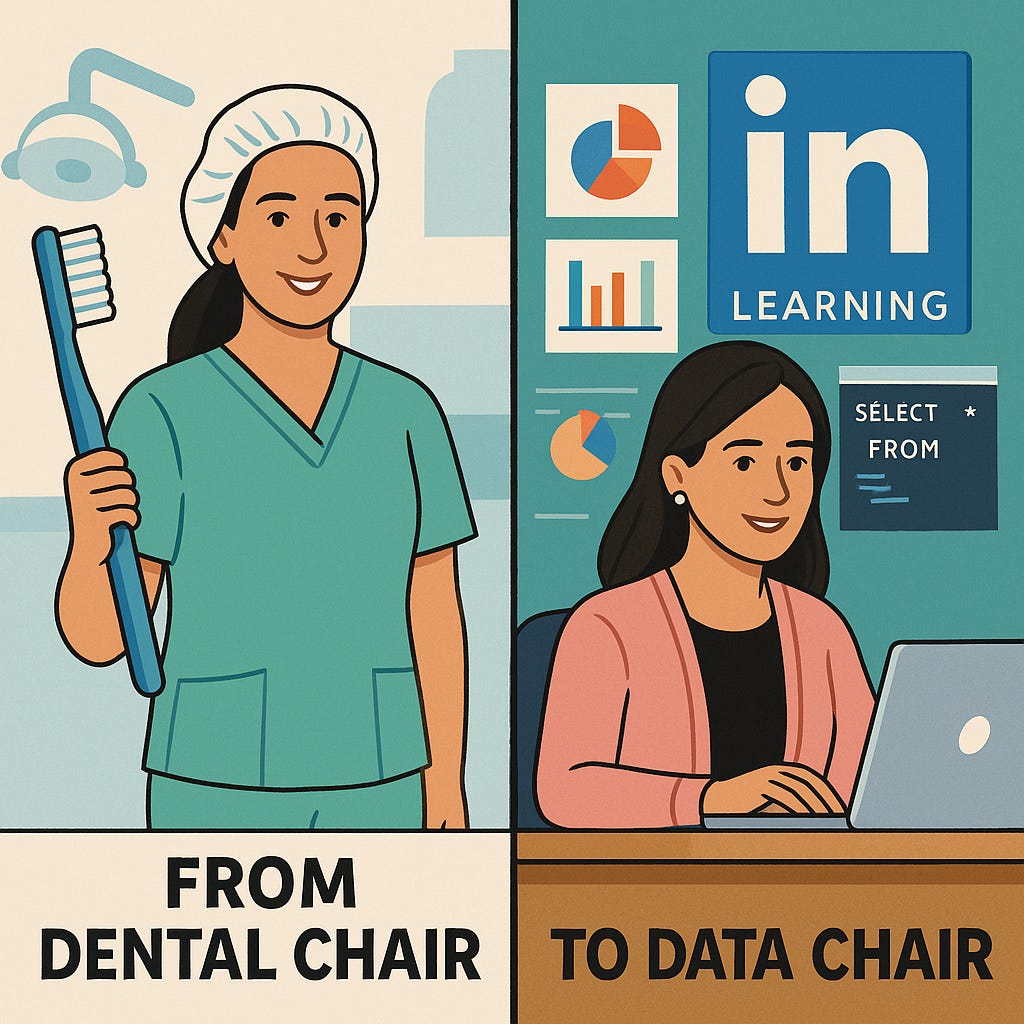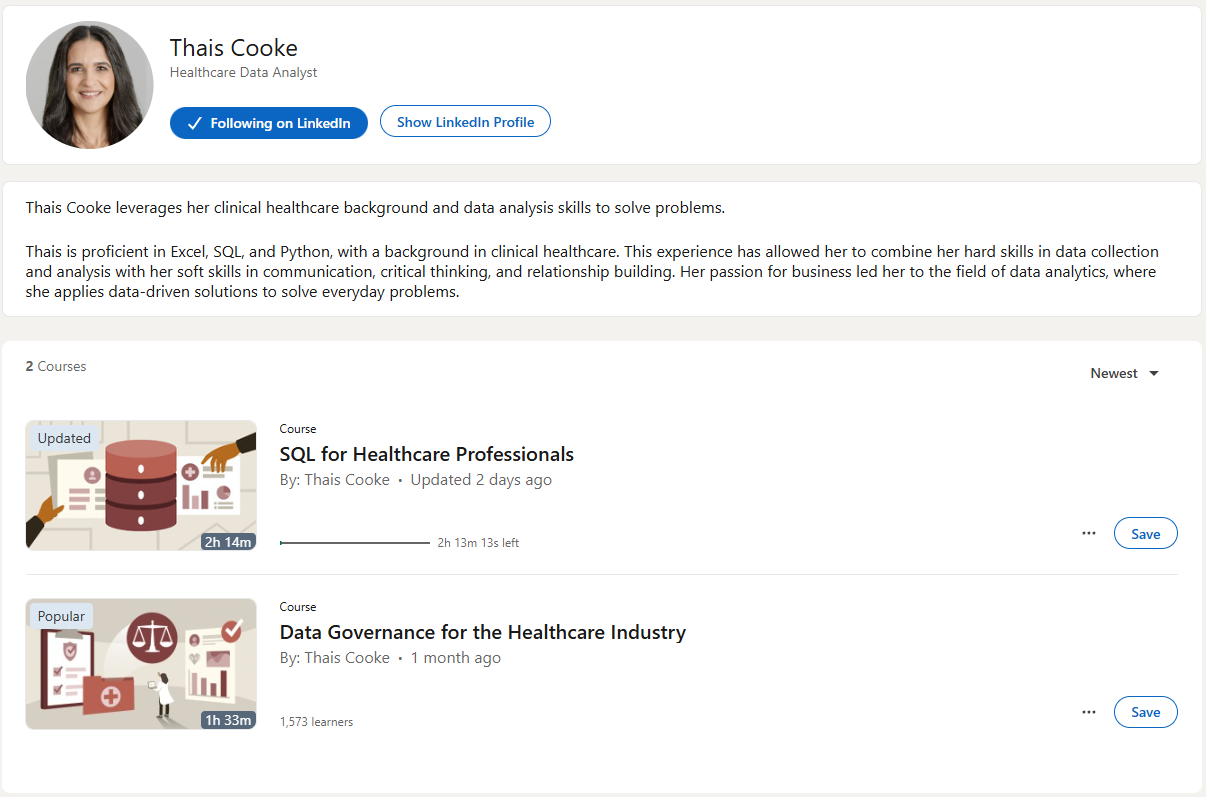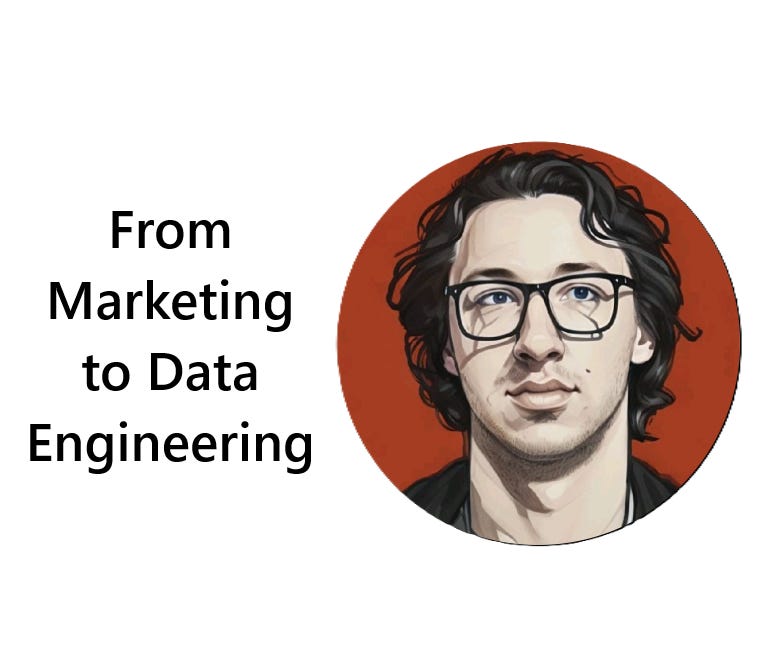From Dental Cleaning to Data Cleaning: How I Pivoted to Healthcare Analytics
How a simple Google search led to SQL. SQL led to a new career. And that career led to teaching others on LinkedIn Learning.
Fellow Data Tinkerers,
I’m continuing the series where we hear from people working in data - how they got here, what they’ve learned and what their day-to-day really looks like.
Meet
who is a Senior Healthcare Data Analyst and writer of the Journal of a Data Analyst newsletter.We talked about her unplanned pivot into data, what healthcare data analysis look like and how she thought she was being scammed by a LinkedIn ‘Impostor’.
So without further ado, let’s get into it!
Can you tell us a bit about your role?
I work as a senior data analyst in population health. Basically, I look at healthcare from a “zoomed-out” perspective. Instead of focusing on one patient at a time, I use data to understand how groups of people are doing, across clinics, regions or entire health systems.
A lot of my work involves cleaning and connecting data from sources like electronic health records, insurance claims or community health data to find patterns that can improve care delivery. I might look at trends in chronic conditions, preventive screenings or follow-up care to see where we’re doing well and where patients might be falling through the cracks.
How did you break into data analysis?
Honestly, by accident. I was working as a dental hygienist and I was burned out for many different reasons. Then COVID came along and that was the final push to find something new.
A friend mentioned an opening at her dental lab. They needed someone who understood dental terminology and could manage data in Google Sheets. I started entering data but soon I started noticing patterns: some weeks we had more implants, other weeks fewer orders from certain offices. My curiosity kicked in and I literally Googled, “How do I analyze data?”
That’s how I stumbled onto YouTube channels like Alex the Analyst who had also transitioned from healthcare into data. He kept emphasizing the importance of SQL so I decided to learn it. The first time I wrote a SELECT statement, I was hooked. I had no idea I could do so much with data!
From there, I practiced SQL, got better in Excel, learned Tableau and started bringing insights to my manager. She loved it, and I became the “data analyst on the spot.” Eventually, I joined a larger company with a formal data team and that’s where I’ve been ever since.
Thais’s path
dental hygienist → data entry → healthcare data analyst → senior healthcare data analyst
What does a typical week look like?
It depends. I might be cleaning and combining datasets from different hospital systems, building reports or investigating why something unexpected is showing up in the data.
But honestly, it’s not all coding all day long like people sometimes imagine. A lot of my time is spent thinking and strategizing about the problem ahead of me: modeling the data, defining the right questions and figuring out what’s really meaningful versus just noise.
I also spend a lot of time talking with care teams or operations folks to understand what’s happening on the ground. Because in data, the numbers only tell part of the story, you need that human context to make the data come alive.
So yes, there’s SQL and dashboards involved but there’s also a lot of detective work, translating and connecting dots between the data and the people who use it.
In data, the numbers only tell part of the story, you need that human context to make the data come alive.
You’re also a LinkedIn Learning instructor. How did that happen?
For my first LinkedIn Learning course, someone from their team reached out to me and I’ll be honest, I thought it was a scam at first! But it turned out to be real.
That course, SQL for Healthcare Professionals, came from my own learning experience. When I was studying SQL, most of the examples I found were about sales or customers, not patients or clinics. I had to mentally translate everything into healthcare scenarios. So I created the kind of course I wished I had back then.
The second course, Data Governance for the Healthcare Industry, followed naturally. Data governance looks very different in healthcare. It’s not just about access and control; it’s about privacy, compliance and trust. So it made sense to build something specific for that world.
What kinds of data do you work with?
Mostly structured data that live in tables, like patient demographics, outcomes and claims. I usually pull from warehouses or multiple datasets and model them around a specific question.
The type of data changes with the problem: sometimes it’s preventive care, sometimes cost trends, sometimes operational performance. Every dataset has its own story.
And how does that tie back to the business?
My work connects directly to how we measure and improve patient outcomes. It is all about delivering better care while using resources wisely.
For example, if we can identify patients who are at high risk of hospital readmission, we can help care teams intervene earlier. So the data work might look technical but the goal is always practical: to help healthcare teams make smarter decisions that benefit both patients and the organization.
You’ve worked with healthcare data for a while. What’s unique about it?
Everything in healthcare is connected and that’s what makes it both fascinating and complex. You’re not just analyzing transactions; you’re analyzing people’s lives.
The data is incredibly sensitive, and the stakes are high. Small errors can have real-world consequences. On top of that, healthcare data lives in silos. You have data in Electronic Health Records, labs, and claims and those systems don’t always talk nicely to each other.
But when you get it right and you see data actually improving care, it’s incredibly rewarding.
What’s in your tech stack?
SQL is my main language. I also use Python for data wrangling, some Python libraries for visualization, and DuckDB for managing local data workflows.
Most of my day-to-day happens inside SQL, but I’ll switch to Python when I need more flexibility or automation.
Languages: SQL, Python
Database: DuckDB
What’s a common misunderstanding about data analysis?
That it’s all coding and dashboards. Some days I don’t write a single line of code.
The truth is, tools are just a small part of it. The real skill lies in thinking like an analyst, by asking the right questions, interpreting results and connecting the data back to real-world context.
You can have the perfect SQL queries but if you’re answering the wrong question, it doesn’t matter.
One thing you wish you knew earlier about data analysis?
That you don’t need to master every tool before you start. I wasted time thinking I had to know everything first. In reality, curiosity and communication take you much further than tool mastery.
Don’t get me wrong: you still need to know how to use the tools, since they are a means to an end. You’ll learn more about it as you go. If you can think critically and tell a clear story with data, you’re already ahead.
Any spicy takes?
Not every dataset needs to be big to be useful. Some of the best insights come from small, well-understood data.
And analysts should spend less time chasing shiny new tools and more time sharpening their questions and thinking skills. Tools change fast but good thinking doesn’t.
Not every dataset needs to be big to be useful. Some of the best insights come from small, well-understood data.
If you enjoyed reading this, check out Thais’s newsletter where she shares her insights on data analysis and AI like this:
Was there a question that you would like to ask?
Let me know your thoughts by replying to the email or leaving a comment below!
If you are already subscribed and enjoyed the article, please give it a like and/or share it others, really appreciate it 🙏
Keep reading
From Marketing to Data Engineering: How I Made the Switch
Kicking off a new series where data folks share how they got here, what they’ve learned and how they actually work day to day.
First up: Alejandro Aboy, Senior Data Engineer at Workpath and writer of The Pipe and The Line
We talked about his path from marketing to data engineering, why his teammates call him an octopus and his take that “big data” is a myth for most teams.









Such a fun pivot! SQL is evergreen, and no amount of new, "shiny" tools can take that away.. Well, I hope so :)
I too work in healthcare data analytics. It has been a journey of learning and at times and sometimes venturing into the unknown. I relate to the story of transitioning careers. When I moved into my first Analytics role, I came from a position of underwriting insurance, and moved to be an insurance analyst.